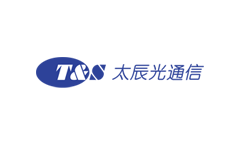How to Plan the Future 5G Fiber Network?

The real 5G fiber optic network is gradually being rolled out and faces many challenges.
Ⅰ. 5G fiber optic has the following capacity requirements
1. 4G uses traditional macro base stations with antennas and remote radio units (RRUs) installed on top of towers. In some cases, such as in high-density urban areas that are difficult to cover, high-density coverage is achieved by supplementing more base stations.
2. 5G fiber optic-enhanced mobile broadband will rely on a dense network of small base stations and macro base stations for deployment, aiming to support higher frequency bandwidths for higher capacity demands.
3. 4G/5G requires a large number of the new macro base stations and small base station nodes to implement higher-order partitioning and MIMO, increase the number of fiber connections required at the top of the tower, and meet the front haul and back haul requirements of 5G higher density outdoor small cells.
Therefore, the original copper cable has long exceeded its data transmission capacity and will be gradually replaced by optical fiber. It is particularly important to have a complete optical fiber network to support high-traffic, high-speed, and low-latency transmission.
Ⅱ. The main solutions for 5G fiber optic networks
1. Discrete FTTA/FTTN deployment
Traditional solutions for bringing fiber optic cables and power into macro and outdoor small cells include discrete fiber-to-the-antenna (FTTA) and fiber-to-the-node (FTTN) solutions. The discrete approach offers good design flexibility.
At the same time, the introduction of 5G in standalone/non-standalone architectures has intensified the fronthaul requirements for small cell radio nodes, which highlights the need for more efficient and economical FTTA/FTTN solutions. Additionally, deploying 5G fiber optic with mmWave spectrum requires multiple fiber optic cable connections at each node to provide sufficient backhaul capacity due to the large amount of bandwidth that needs to be supported.
2. Hybrid FTTA/FTTN solution
Installation time, cost, and tower loading become problems as the number of antennas and nodes required increases. Many networks have now moved to hybrid FTTA/FTTN solutions, where one or more power cords and multiple fiber optic cables are bundled within the same outer jacket to form a hybrid trunk and hybrid patch cord.
As the number of RRUs deployed has increased, various hybrid FTTA solutions have emerged. These include solutions that support individual sector cabling, as well as a variety of transit systems that provide options for speeding installation and lightening tower loads.
3. Optical cable to node suitable for C-RAN outdoor small base station
Various FTTA/FTTN solutions also play a unique role in the growing deployment of Centralized RAN (C-RAN) fronthaul architectures including outdoor small cells. This method can take different forms: the fronthaul of the outdoor small base station can be directly accessed using external optical fibers from the central equipment room or the front end. Another architecture is to use shared optical cable resources to connect small cells. In both cases, multiple fiber optic cables are required to connect directly from the small base station to the central facility, and low-voltage grid power is also required.
In many cases, environmentally ruggedized multifiber connectors will be used to connect small cell nodes to adjacent cable demarcation points, such as wired terminations in handholes. So, in addition to FTTN cabling, fiber optic splice boxes (FOSCs) and multi-service terminals (MSTs and similar MHTs) will come into play.
With the deployment of 5G and the overlay facilities to support 5G fiber optic, the number of new fiber optic cables required is expected to be enormous. At the same time, specific base station requirements such as installation speed, tower loading, etc., suggest that network owners and operators may need to expand their FTTA/FTTN toolbox if they wish to continue to meet installation schedules and budgets. This means it is essential to be familiar with the discrete and hybrid solutions available and understand the unique value proposition of each solution.
As a fiber optical accessories supplier, T&S communication today takes a leading role in OEM and ODM service for optical fiber termination solutions. Based on T&S Communications’s excellent comprehensive capabilities, T&S Communication is dedicated to bringing fiber optical components with superior performance to next-generation communications in a green, pragmatic, and cost-effective manner.
- +1 Like
- Add to Favorites
Recommend
- What Are the Specific Classification Methods of Fiber Optical Products?
- How to Achieve Precise Connection of Optical Fibers with Fiber Connectors?
- OpDAT MV Highly Flexible Distributor Housing from METZ CONNECT is Designed for Fiber Optic and Copper Applications
- The Difference Between 100G QSFP28 Fiber Optical Transceiver and 100G CFP4 Fiber Optical Transceiver
- What is Passive Optical Network (PON) ?
- Fiber Optical PLC Splitters in Different Communication Network Structures
- What is the Minimum Bending Radius of an Optical Fiber Patchcord?
- Firecomms Fiber Optics for Consumer Network Applications
This document is provided by Sekorm Platform for VIP exclusive service. The copyright is owned by Sekorm. Without authorization, any medias, websites or individual are not allowed to reprint. When authorizing the reprint, the link of www.sekorm.com must be indicated.





























































































































































































































































































































































































































































































































































































































































































































































































































































































